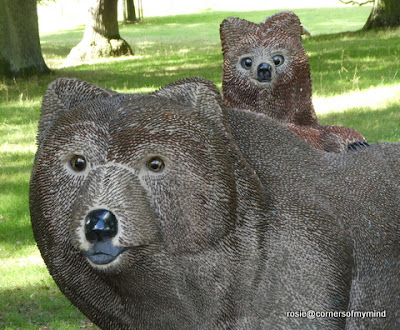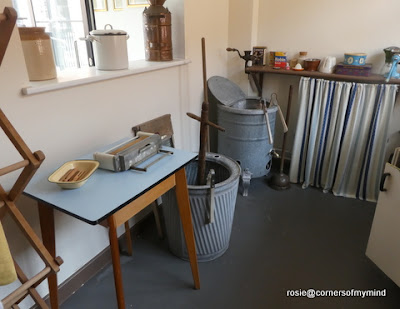A new area of the museum at Middleport Pottery was opened this summer just across the street from the main factory.
I've written once or twice about the main museum and factory so I'll just write about the new project in this post.
The row of houses are typical of pottery workers' houses of the late 19th Century and it is thought that they were constructed at a similar time as the factory which was built in 1888. The houses first appear on a map dated 1889.
The refurbished terrace now houses a self contained community hub called Middleport Matters, studios and creative workshops, a collections store and research centre for the museum and last but not least at the far end of the row above, opposite the factory, the Lodgekeeper's house.
The back view of the row of refurbished houses. You can see where ground floor extensions have been taken away. These would probably have been kitchens or bathrooms. The end three houses have been turned into a visitor experience.
They have been given bat boxes under the eaves which is good. The whole area is of great industrial archaeological importance due to the nearby canal network.
The factory stands at the edge of the Trent and Mersey canal.
Let's visit the Lodgekeeper's House or 113 Harper Street.
By 1950 the house was lived in by Mr and Mrs Hall and their three children.
The Lodgekeeper's house has been returned to the 1950s whilst the others have been turned into display and gallery space where you can listen to people's memories of living and working in the area and at the factory.
The house is available on the Heritage trail and you have to have a guide take you inside. Our guide was wonderful and full of information and she also left us to wander around on our own. We were there on a Bank Holiday Sunday but we had the place to ourselves.
Downstairs you can view the kitchen, scullery and parlour.
The detail in the rooms brought back lots of memories of visiting relatives as a child and indeed of my own home in the early 1950s.
The patterns in the wallpaper and curtains. The ducks on the wall and the china display cabinets. The tobacco tins and pipes by a chair close to the fire. Our guide did tell us that they needed a period sofa and chair for the parlour and were hoping eventually to acquire something of an appropriate age.
In the bedrooms the eiderdowns and trellis patterned wallpaper were very familiar. I remember the wallpaper in my bedroom was a green trellis with yellow roses.
Dark brown wardrobes and tallboys too. I remember I had a little dressing table with a pink brush and comb set on it.
The rest of the displays were photograhs of people and places in the area. Local stories told by local people were activated as we walked around. Itwas fascinating to hear how they lived and worked in the area. Tales of school and childhood play.
It was time for a coffee in the canal side cafe and then a look around the shop before we went home. By now there were a lot more people than when we first arrived so I'm glad we visited the 1950s house first.
Of course writing this now almost two weeks later we have seen changes which weren't thought of then or even at the beginning of this week. I was born during the reign of the late Queen's father, George VI but I was not quite two years old when Elizabeth became Queen so I really have only known her as our Monarch. It feels strange that she is no longer there, as if the mortar holding the bricks of this country together has gone and now it's all a little wonky.
I'm sure all will be well.





























































